The 7 Main Parts of a Metal Roof
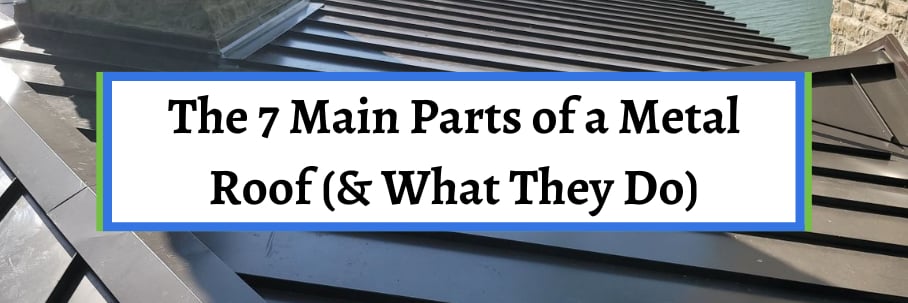
A metal roof is a combination of different components that come together to form a roof system. While the panels make up the bulk of a metal roof, each component has a specific function to ensure your home stays leak-free.
But learning what they are and what they do isn’t the only reason you need to know about metal roofing components. You also need to ensure all of them are included in your metal roof estimate, so you get exactly what you pay for.
So, what are the components that make up a metal roof system?
For over 30 years, the team at Bill Ragan Roofing has helped homeowners learn everything they need to know about their roofing project. Because of this, I’ll break down the main parts of a metal roof system.
Just know that these components are specific to a standing seam metal roof (the recommended residential metal roof system). Let’s get to the 7 main parts of a metal roof.
1. Roof decking
Roof decking (also called sheathing) acts as the foundation of a roof system. These wooden boards (plywood, OSB, plank) are what the rest of your metal roof and its components are installed on.
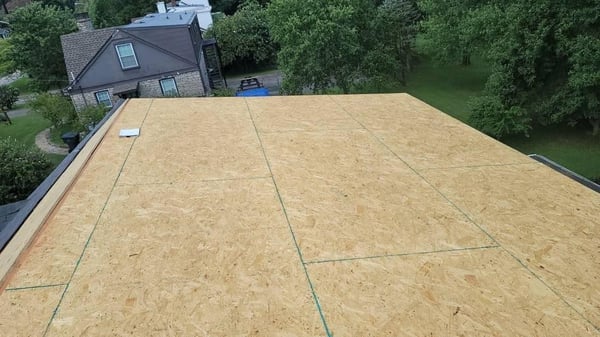
When getting a metal roof replacement, you may not have to replace your roof decking. But if there’s any rotten decking, your roofing contractor will have to replace it before they can begin installing your metal roof.
Unfortunately, your roofing contractor won’t know the exact amount that needs to be replaced until after they finish tearing off your old roof.
2. Lock strip
Lock strips hold (lock) your metal roof panels to your roof edges and keep them from lifting from strong wind. They're installed at the eaves (bottom edge of your roof at the gutter line) and rakes (the sloping side of your roof).
Lock strips will be the same color and gauge as the metal roof panels. Just like steel metal panels, the lock strips will come with a Kynar 500 painted finish.
The painted finish protects your lock strips from the elements and keeps the color you choose from fading.
3. High-heat ice and water shield as underlayment
Roof underlayment is a felt (15 lb or 30 lb) or synthetic material used over roof decking to provide additional protection. For a metal roof, the underlayment will be high-heat ice and water shield.
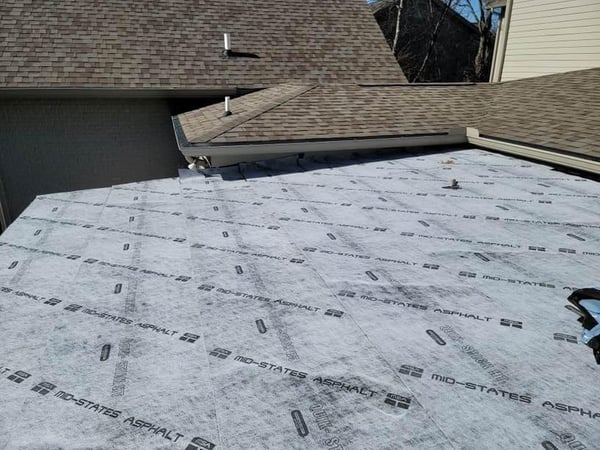
Your metal roof’s high-heat ice and water shield acts as the last line of defense for your roof decking. Just know that the ice and water shield must be installed over the lock strip at the eaves.
If the lock strip is installed over the underlayment, the condensation under the ribs runs down the fascia board behind the lock strip, and eventually, it rots out. I can't stress enough that the underlayment must be installed over the lock strip on your metal roof.
4. Metal panels
The metal panels make up the bulk of your metal roof system. Standing seam metal panels are attached to the roof deck by lock strips and clips at the ribs, so they're free of any holes from nails or other fasteners.
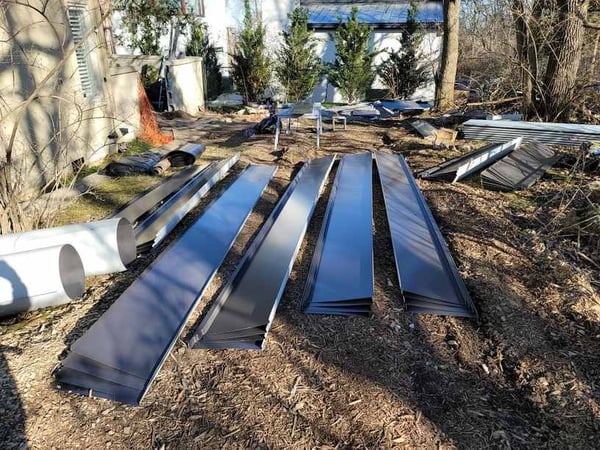 (Before installation)
(Before installation)
The ribs (standing seams) on the metal panels are usually 12 to 24 inches apart, depending on how long the metal panel is. Because the ribs are locked together at the seam, the metal panels can glide back and forth freely as they go through thermal expansion.
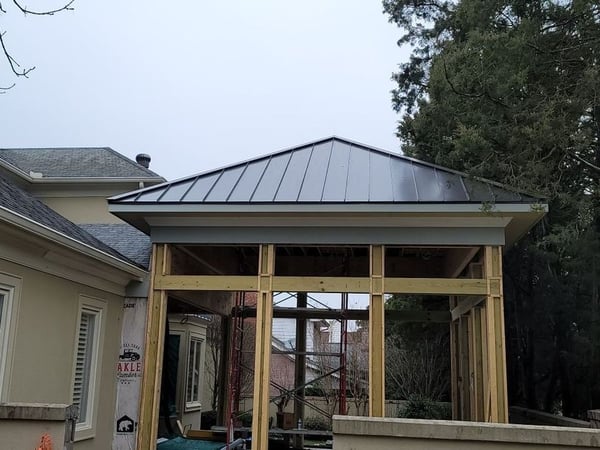 (After installation)
(After installation)
The most common type of metal panels is a 24 gauge pre-finished steel with the Kynar 500 finish. However, you can choose a different gauge, and there are multiple colors to choose from.
5. Clips
The clips are fasteners that lock (clip) your metal panels together. These clips are installed every 12 to 24 inches on the seam's vertical part.
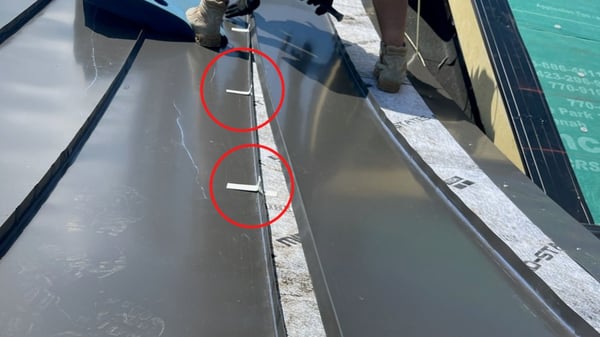
These clips are screwed to the vertical part of the panel using two gimlet screws. Once the clip is installed, the next panel snaps on top of the clip fastening it to the other panel.
These clips allow the panels to glide up and down your underlayment (high heat ice and water shield) without wearing it out.
6. Z bar
A z bar is a piece of metal bent in the shape of a “Z” that is 1/8th of an inch taller than the ribs on the metal panels. After the metal panels are installed, this piece of metal flashing is installed to fill in the spots between the ribs and the ridge.
This protects the panels if water comes through the rib gaps at the ridge of your roof. Once the z bars are installed, the entire metal roof is ready to lock in at the ridge capping.
7. Ridge capping or transition metal
Ridge capping is installed at the peak where two slopes of a roof meet. Like every other metal component, it will be the same type and color as your metal panels.
But if the metal panels are coming from a low slope roof to a steeper slope, you’ll need transition metal instead of ridge capping. The transition metal will come down the roof and out 6 inches to ensure there's a straight plane, across and then it’ll lock onto the Z bar.
Once your ridge capping or transition metal is installed, your metal panels will be completely locked in, and you’ll have a new standing seam metal roof.
Is metal roofing right for you?
Now you know the 7 main parts of a metal roof and their function. While this is great information, there’s still much more to learn about metal roofing.
The best way to continue your metal roofing education is by learning about the pros and cons. That’s why I wrote another article breaking down the main advantages and disadvantages when getting a metal roof for your home.
The team at Bill Ragan Roofing has provided high-quality metal roof replacements to homeowners in Nashville and surrounding Middle Tennessee areas since 1990. Our workmanship ensures you get a metal roof that lasts for decades to come.
Check out The Pros and Cons of Metal Roofing to continue learning about your future metal roof.


